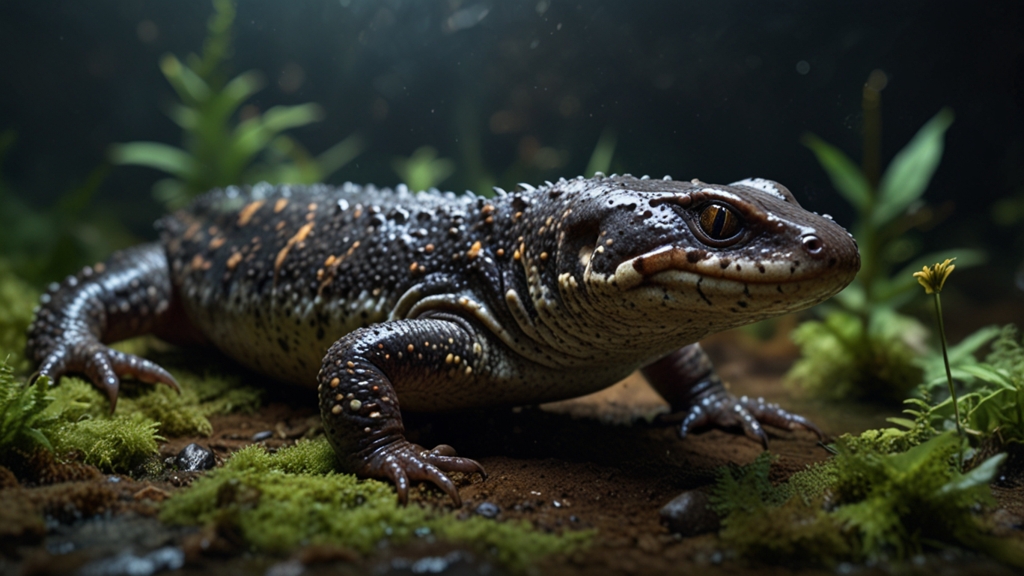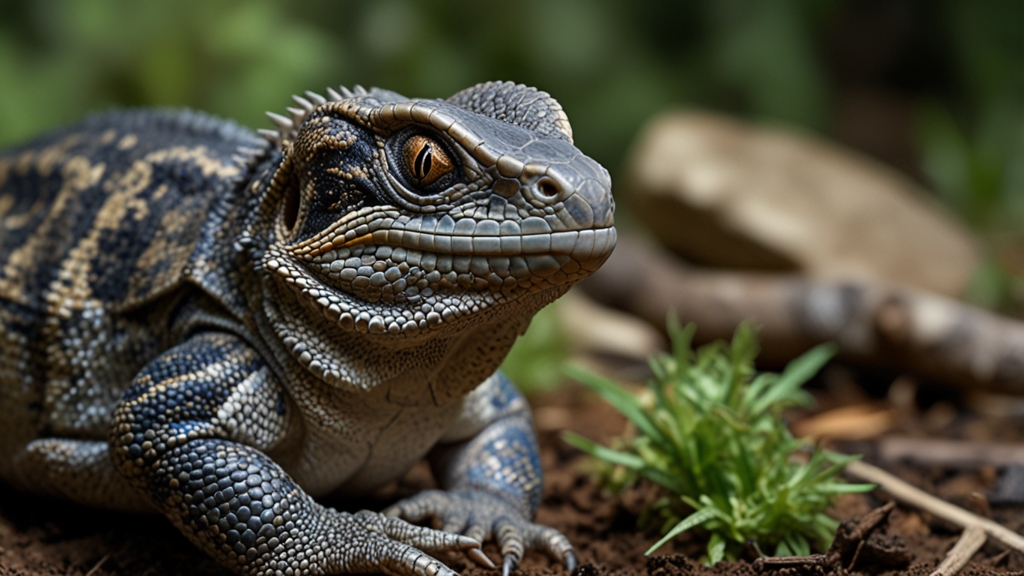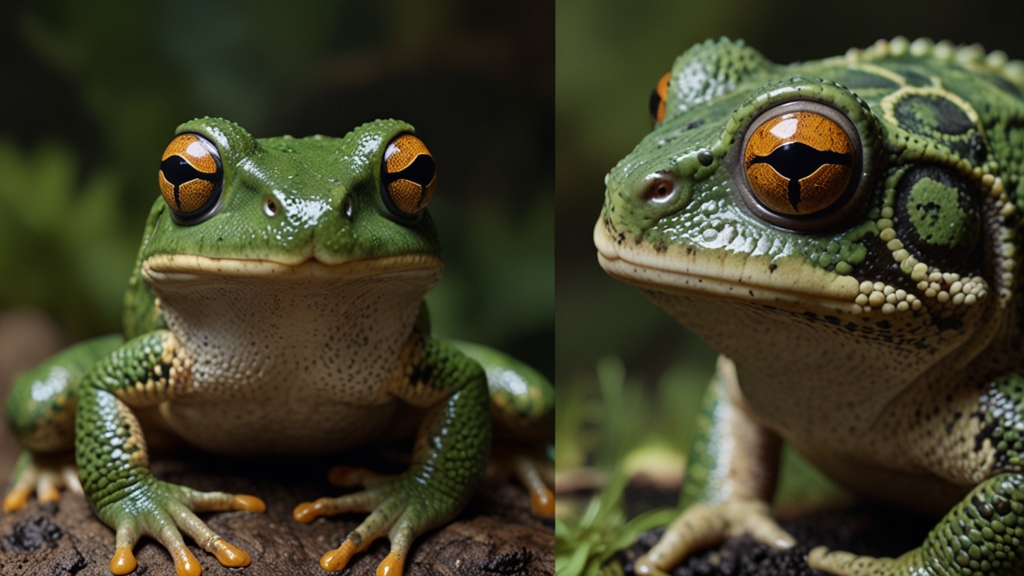Meet the Giant Salamander: An Amphibian from the Depths
The giant salamander, a remarkable amphibian shrouded in mystery, captivates the imagination of biologists and nature enthusiasts alike. These elusive creatures, often regarded as living fossils, have retained much of their ancient physiology over millions of years. Predominantly found in the rivers and streams of Asia and North America, giant salamanders play a crucial role in maintaining the ecological balance of their aquatic habitats.
Physical Characteristics
Giant salamanders are among the largest amphibians in the world, with some species reaching lengths of up to 1.8 meters (6 feet). Their robust bodies are adapted to life in fast-moving streams and rivers, with strong, muscular limbs and broad, flattened heads. Their skin, typically dark brown or black with mottled patterns, provides effective camouflage against the rocky riverbeds they inhabit.
One of the most fascinating aspects of giant salamanders is their respiration. Unlike most amphibians, they primarily rely on cutaneous respiration – breathing through their skin. This is facilitated by their extensive network of blood vessels just below the skin surface, allowing efficient gas exchange even in oxygen-poor environments.
Species and Distribution
The giant salamander family includes three main species:
- Chinese Giant Salamander (Andrias davidianus)
- Japanese Giant Salamander (Andrias japonicus)
- North American Hellbender (Cryptobranchus alleganiensis)
The Chinese and Japanese giant salamanders are primarily found in clean, cool mountain streams and rivers in China and Japan, respectively. Meanwhile, the hellbender is native to the eastern United States, inhabiting similar riverine environments. Despite their geographical separation, all three species share common evolutionary traits and ecological roles.
Ecological Importance
Giant salamanders are apex predators within their aquatic ecosystems, preying on various species including fish, crustaceans, and insects. Their presence helps control the populations of these animals, thereby maintaining the ecological balance. Furthermore, their sensitivity to environmental changes makes them important bioindicators; a decline in giant salamander populations often signals broader ecological issues.
"In essence, giant salamanders are sentinels of aquatic health, their well-being intricately linked to the well-being of their entire ecosystem."
Conservation Challenges
Despite their ecological significance, giant salamanders are facing numerous threats. Habitat destruction due to dam construction, pollution, and deforestation significantly impacts their populations. Additionally, illegal poaching driven by demand in traditional medicine and cuisine has exacerbated their decline.
The Chinese giant salamander, in particular, is critically endangered, with wild populations having plummeted by more than 80% in recent decades. Conservation efforts, including captive breeding programs and habitat restoration, are crucial to their survival.
"Conservationists are in a race against time to protect these ancient amphibians, whose continued existence is a testament to the resilience of life on Earth."
Future Prospects
While the road ahead is fraught with challenges, there is hope for the giant salamander. International cooperation and increased public awareness can drive the necessary changes to protect these enigmatic creatures. By fostering a deeper understanding of their role in the ecosystem, we can galvanize efforts to preserve not just the giant salamanders, but the myriad forms of life that share their habitats.
In conclusion, the giant salamander embodies the delicate interplay between species and their environments. By learning more about these extraordinary amphibians, we take a step closer to preserving the natural world's intricate web of life.
"In the end, the survival of the giant salamander is not just about conserving a single species; it's about safeguarding the future of our planet's rich and diverse ecosystems."








